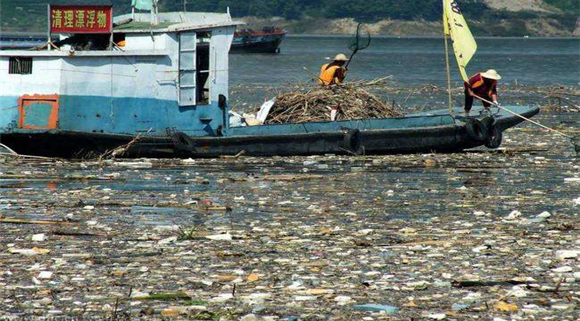Untreated factory waste and domestic waste are simply piled up in the open air, occupying land and destroying landscape. Moreover, the harmful components in the waste are spread by the wind and enter the soil, river or underground water source after rain. This process is solid waste pollution.
(1) Water pollution.
Without harmless treatment, solid waste will flow into rivers and lakes along with natural precipitation or surface runoff, and it will be silted up for a long time, reducing the water surface, and the harm of its harmful components will be greater. The harmful components of solid waste, such as mercury (from red plastic, neon tube, battery, vermilion printing mud, etc.), cadmium (from printing, ink, fiber, enamel, glass, cadmium pigment, coating, coloring ceramics, etc.), lead (from yellow polyethylene, lead water pipe, antirust coating, etc.), and other trace harmful elements, such as improper treatment, can enter into the soil with the leaching water, thus polluting the groundwater, At the same time, it may also seep into the water network with rainwater, flow into wells, rivers and nearby sea areas, be ingested by plants, and then enter the human body through the food chain, affecting human health. It is found that the concentration, chroma, total bacteria and heavy metal content of groundwater exceed the standard seriously around the landfill of some cities in China.
(2) Air pollution.
The dry matter or light matter in solid waste will fly with the wind, which will pollute the atmosphere. Incineration is a popular way to deal with solid waste at present, but it will produce a lot of harmful gases and dust. Some organic solid waste will be piled up for a long time, and will be decomposed by microorganisms under suitable temperature and humidity, and release harmful gases at the same time.
(3) Soil pollution.
The soil is the place where many bacteria, fungi and other microorganisms live. These microorganisms play an important role in the embodiment of soil functions. They form a balanced ecosystem with the soil itself. The untreated hazardous solid waste, after weathering, rain, surface runoff and other functions, its toxic liquid will penetrate into the soil, and then kill the microorganisms in the soil and destroy the life in the soil In a state of balance, the polluted areas are even barren.
(4) Occupying land.
The increasing production is quite rapid. Many cities use large areas of farmland on the outskirts of the city to pile them up. No wonder the large amount of white garbage around the city is so conspicuous in the earth photos taken by scientists from the satellite.



